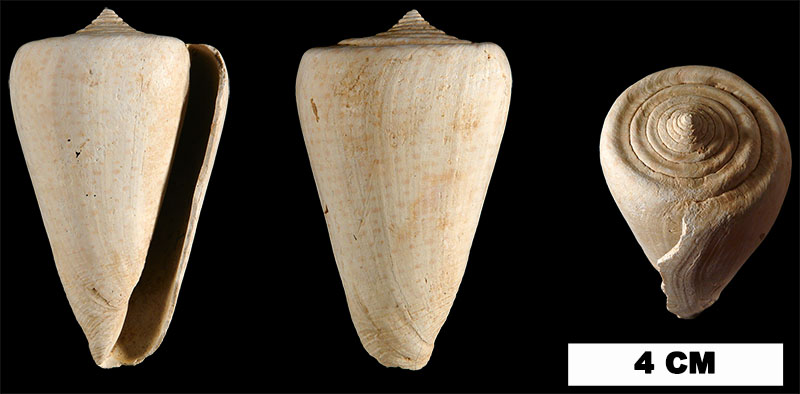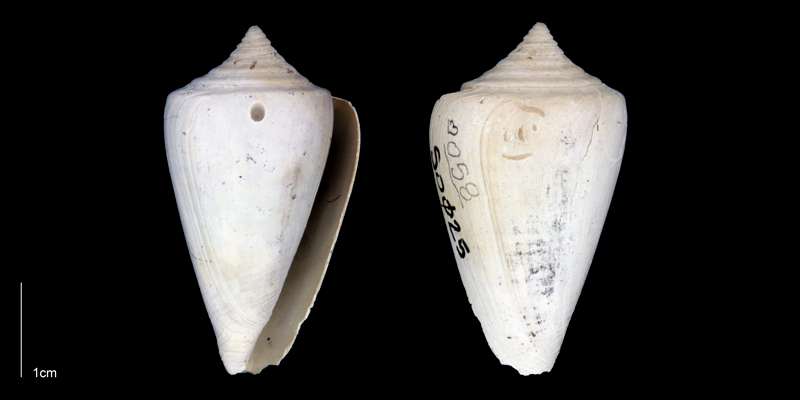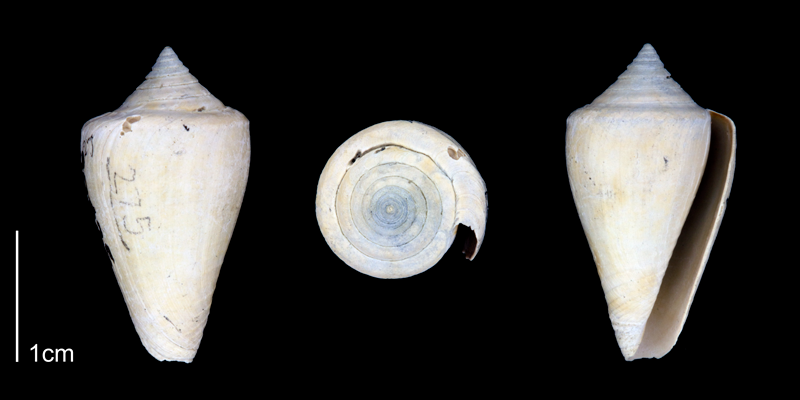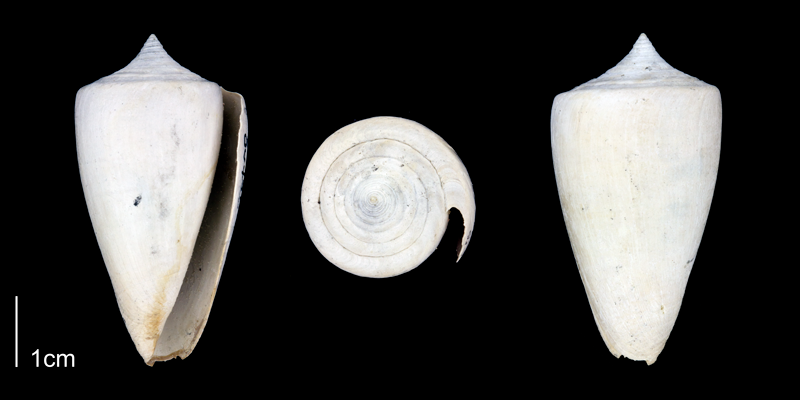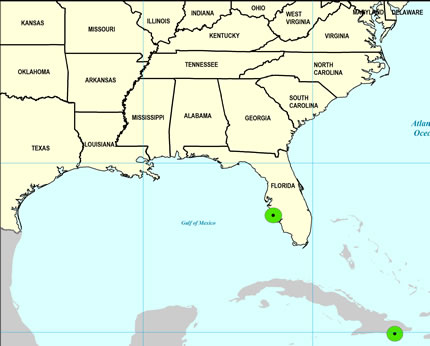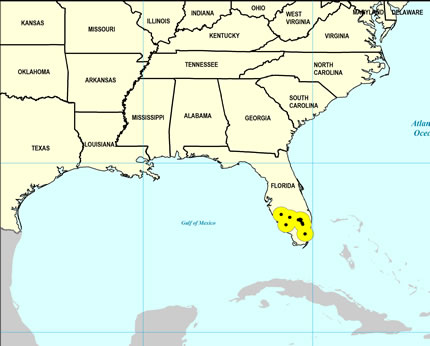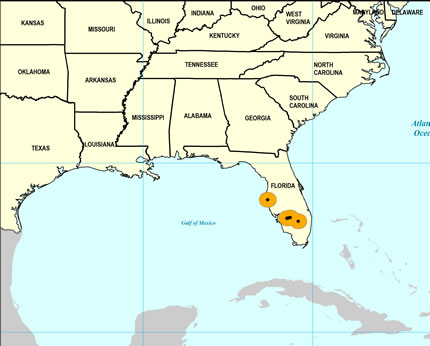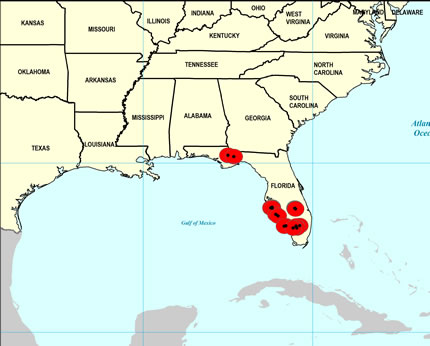
Conus spurius
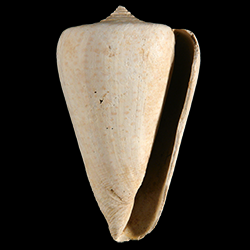
- Phylum: Mollusca
- Class: Gastropoda
- Order: Neogastropoda
- Family: Conidae
- Genus: Conus
- Species: Conus spurius (Gmelin, 1791)
- Common Name: Alphabet cone
Geological Range
Late Pliocene (see remarks) to Late Pleistocene; Recent.
Paleogeographic Distribution
Cuba to Southern Florida (see remarks).
Remarks
For information on the modern distribution of the species, see Malacolog. A project to investigate the fossil record of Conus spurius beyond southern Florida is currently in progress. The fossil record of the species likely extends into the Caribbean and back to the Late Miocene.
First English Description (from Dillwyn, 1817, p. 366):
"Shell conical, white, with irregularly alternate rows of broad and smaller spots; spire depressed, mucronated, and the whirls concave.
[...] Shell about two inches long, and rather more than half as broad, with the spire flattish at the circumference, and mucronated at the centre; some of the rows of spots are frequently confluent, and others detached in the same specimen, and in other specimens they are frequently all detached, and often considerably distant from each other. A shell from the Red Sea figured by Chemnitz, x.t. 140. f. 1300, has the spire considerably elevated, and is considered by Bruguiere to be a Variety of this species."
To access this description in its original formatting through the Biodiversity Heritage Library, click here.
Stratigraphic Occurrences
- Late Pleistocene
- Fort Thompson Formation (S. FL)
- Jaimanitas Formation (Cuba)
- Middle Pleistocene
- Bermont Formation (S. FL)
- Early Pleistocene
- Caloosahatchee Formation (S. FL)
- Late Pliocene
- Jackson Bluff Formation (N. FL)
- Tamiami Formation (Pinecrest Beds) (S. FL)
